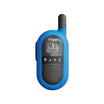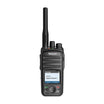Understanding the Address Resolution Protocol (ARP)
In the interconnected world of communication networks, precision in data transmission is paramount. This precision is largely attributed to a foundational component known as the Address Resolution Protocol (ARP). ARP serves as a critical TCP/IP protocol designed to associate a device's physical hardware address, known as a Media Access Control (MAC) address, with its corresponding Internet Protocol (IP) address. This protocol ensures that when data is sent within a network, it reaches the correct device by translating IP addresses, used by the TCP/IP protocol, into MAC addresses that identify devices within the local network.
ARP's Significance in Two-Way Radio Systems
The integration of ARP into two-way radio systems represents a significant leap forward, particularly as these systems evolve from analog to digital and IP-based networks. In traditional two-way radio setups, communication is relatively straightforward – a signal is broadcast from one radio to another within a specific frequency band. However, as digital transformation takes hold, these systems begin to overlap with broader IP networks, incorporating data transmission and more complex networking capabilities.
In this digital environment, two-way radios do not merely send voice communications; they also transmit data, status updates, and may even interface with other IP-based systems such as building controls or vehicle tracking systems. Here, ARP becomes invaluable. For two-way radio devices functioning within an IP network, ARP ensures that data packets reach the correct device. Whether it's a message, a location update, or a distress signal, ARP assists in accurately routing this information through the network to the intended radio unit.
The Application of ARP in Modern Two-Way Radio Communications
The application of ARP in two-way radio communications has broad implications. In a practical sense, when a digital two-way radio tries to communicate with another device on the network, it uses ARP to translate the IP address of that device into a MAC address. This process ensures that the communication finds the right path, preventing data from being sent to incorrect or non-existent devices, which could lead to communication failures or security risks.
Moreover, ARP enhances the efficiency and reliability of two-way radio networks, particularly in complex operational environments like emergency services, transportation networks, or large industrial sites. For instance, in an emergency response scenario, where every second counts, ARP helps ensure that critical information such as GPS locations, text messages, or emergency alerts are accurately delivered and received by the intended radios or control systems.
Conclusion
As two-way radio systems continue to intersect with modern network technologies, the role of protocols like ARP becomes increasingly critical. By ensuring accurate and efficient communication within digital and IP-based networks, ARP supports the evolving needs of two-way radio users. It not only aids in maintaining clear and effective communication channels but also underpins the safety, coordination, and operational efficiency of organizations relying on these systems. As we advance, the integration of traditional radio communication with modern networking standards through ARP highlights the transformative journey of two-way radios from standalone devices to integrated communication tools.









































